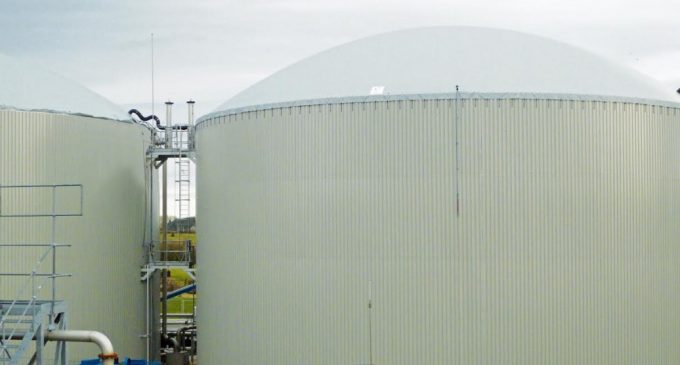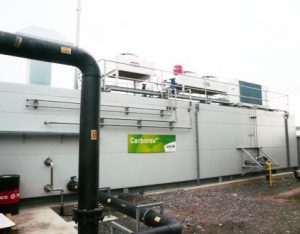Green Energy From First Milk Cheese

Clearfleau, a leading British provider of on-site treatment solutions for the food and beverage sector, is commissioning its most complex plant to date, which will feed bio-methane into the gas grid in rural Cumbria. The plant has been designed and built for Lake District Biogas, which will operate the site for twenty years taking feedstock from dairy co-operative First Milk’s Aspatria creamery site. This comprises low-strength wash waters such as process rinses, supplemented by whey permeate (cheese production residue after protein extraction for use in energy supplements). This is pumped to the AD plant from the creamery.
By feeding the bio-methane into the gas grid, the facility will produce over £3 million per annum in cost savings and revenue, while supplying up to 25% of the creamery’s energy requirements.
This is the first on-site Anaerobic Digestion (AD) plant in the dairy industry in Europe to feed bio-methane to the gas grid, generated exclusively by digesting its cheese making residues. When the plant is operating at full capacity later this Spring, it will treat 1,650 cu m per day of process effluent and whey and generate around 5MW of thermal energy.
It will produce 1000 cu m of biogas per hour, of which over 80% will be upgraded for injection into the national grid. At least 60% of the bio-methane will be used in the creamery for steam generation, with the balance being used by local businesses and households in Aspatria.
Revenue benefits include 20-year index-linked, Government-backed incentive payments, with about £2 million per annum in support through the Government’s RHI scheme and a further £1 million through the sale of gas to the wholesale market and from the Feed in Tariff scheme for the power generated in the CHP engine.
The new plant, with its state-of-the-art British technology, will take over from the outdated aerobic plant. This will have saved First Milk from having to upgrade the old inefficient plant, reducing their effluent treatment costs and carbon footprint, while cutting operational costs, which are borne by Lake District Biogas. Additional benefits from the deployment of on-site digestion in the dairy processing sector include reduced energy and off-site disposal costs.
 Clearfleau’s unique process takes the feedstock from the Aspatria creamery site, comprising low-strength wash waters such as process rinses, supplemented by whey permeate (cheese production residue after extracting protein used in energy supplements). The liquid is then pumped into the AD plant from the creamery where the bugs convert the fats and sugars in the feedstock into biogas.
Clearfleau’s unique process takes the feedstock from the Aspatria creamery site, comprising low-strength wash waters such as process rinses, supplemented by whey permeate (cheese production residue after extracting protein used in energy supplements). The liquid is then pumped into the AD plant from the creamery where the bugs convert the fats and sugars in the feedstock into biogas.
This is stored in the gas dome before being upgraded to bio-methane – 80% of the biogas is fed to a membrane based upgrade unit that removes carbon di-oxide from the gas to produce bio-methane with a comparable thermal value to North Sea gas (some biogas is also fed to a CHP unit to provide power to run the treatment plant).
Gordon Archer, Chairman of Lake District Biogas, says: “Completion of this £10 million project on time, given the weather conditions in Cumbria this winter, has been a major achievement for the project team and Clearfleau. This is the largest AD plant on a dairy processing site in Europe dedicated to handling the residual materials from the cheese making process and we look forward to working with Clearfleau on future projects.”
Craig Chapman CEO of Clearfleau, says: “Dairy processors can generate value from their residues with a better return on investment than for other more conventional treatment and disposal options. This project, generating biogas solely from creamery residues is based on British engineering and is transforming the way in which the dairy industry manages its residues. This shows how sustainability can be an integral part of our food supply chain. We are looking at other dairy projects as more companies realise the energy potential of their residues.”
As an initial step, Clearfleau refurbished the existing aerobic plant to enable First Milk to significantly reduce levels of phosphate in their effluent, which is discharged to the River Ellen. Supported by the Environment Agency, this will ensure an early delivery of new tighter discharge standards, which are required by the Water Framework Directive.
Clearfleau’s on-site AD technology is proven to reduce the chemical oxygen demand (COD) of the production residues by at least 95%. Aerobic polishing will then remove residual COD and nutrients (nitrates and phosphates) to allow safe river discharge.

































